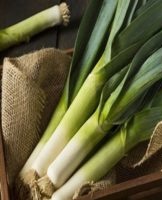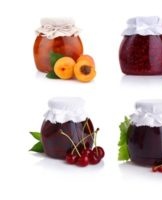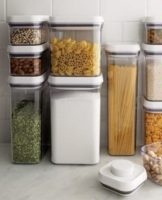How to properly store tea at home and optimal conditions for different types
To obtain high-quality tea, it is necessary to accurately follow the technology of collecting and processing raw materials. A beverage is judged by its taste and aroma after brewing. But even the best product can be ruined if you don't know how to store tea properly. If the conditions and rules are not followed, the taste and its constituent nutrients are lost. Therefore, any tea lover should not only be well acquainted with the varieties, but also know the rules for choosing containers, the place and method of storage.
Tea storage features
Tea leaves are characterized by high hygroscopicity, the ability to easily absorb moisture from the environment. If the conditions are not met, the taste of the drink changes, the product becomes damp, moldy.Due to the different texture of tea leaves, tea storage requirements differ depending on the type of tea. Thus, the storage conditions of black tea are not suitable for green.
Optimal storage conditions
To preserve the valuable qualities of tea, it is necessary to maintain the following parameters at the correct level:
- ambient temperature;
- humidity;
- absence of specific odors;
- lighting;
- contact of the product with the air.
Humidity
Different types of tea react differently to increased humidity. Blacks are more hygroscopic than greens. Normally, the former has a moisture content of 7%, the latter 5%. Moisture is the main enemy of any tea. As soon as the indicator exceeds 8%, the tea begins to deteriorate, oxidize and acquire an unusual taste. At 11% humidity, there is a high probability of mold, which can spoil an entire batch of product.
Temperature
At home, tea can be stored at +20 ⁰С. If the temperature rises, greens, whites, oolongs can continue to ferment and spoil completely, so it is advisable to store them in the refrigerator.
Temperatures are considered optimal for different varieties:
- for white and green - +5 ⁰С;
- fresh oolong - -5 ⁰С;
- red, black, aged oolong - +20 ⁰С.
Sealing
Competent and sealed packaging allows you to preserve the taste of tea, its benefits. Even if the optimal storage conditions are violated, it protects the product from the harmful effects of the external environment and maintains freshness.
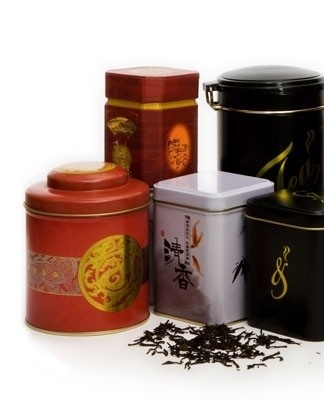
Lighting
Under the influence of sunlight (direct and scattered) in tea, fermentation processes are activated, and oxidation occurs with them. Therefore, paper bags or clear glass containers are not suitable for storage. The container must be opaque, tightly closed.
Strong odor protection
The tea leaf is able to absorb all surrounding odors. Do not store it next to spices or seasonings, aromatic chemicals or building materials.
The best solution is to place the tea in a secure sealed container in the refrigerator on a shelf with vegetables or in a cupboard, away from foods and smelly objects.
Contact with oxygen
Tea contains polyphenols whose benefits are their antioxidant properties. After contact with oxygen, they are oxidized and their beneficial qualities are lost.
To avoid this effect, you can pack the tea in portions in bags, seal with a household sealer and place in the refrigerator.
Recommendations for choosing a location
When storing tea, a number of rules are followed:
- the place where the tea container is placed should be protected from moisture, low and high temperatures;
- optimal conditions - room temperature, relative humidity of about 70% and slight darkness;
- the possibility of storing tea next to fragrant products should be excluded.
How to choose the right container
When choosing a container for tea, they are guided by the amount consumed. In case of infrequent use, it is worth buying tea in small portions and storing it in miniature jars, separately from the main packaging. The shape of the container does not matter. The material of its manufacture can be anything - ceramics, plastic, glass, tin. The lid should close tightly, without gaps or gaps.
Porcelain
The material is ideal for storing tea. Porcelain is neutral, odorless, does not react with the product.Optimum humidity is maintained in special porcelain tea pots, they reliably protect the contents from extraneous odors, close tightly and look aesthetically pleasing. Very thin porcelain that can transmit sunlight should be avoided.
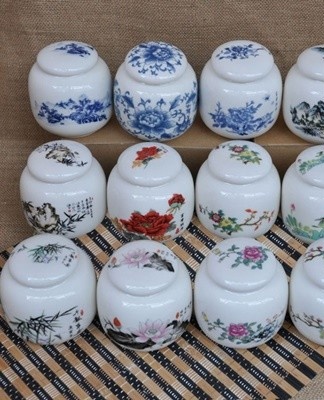
Ceramic
Earthenware, or yellowish ceramic, is distinguished by large pores, so in its pure form it is not suitable for storing tea, since it is able to absorb all odors. Such a pot should be covered with a thick layer of glaze from the inside. Spraying varnishes and paints is contraindicated. Brick-red earthenware looks elegant. Ideal for storing tea, provided there is a glaze inside the product.
Foil
A jar lined with foil can be a good, inexpensive storage option. It does not transmit light, does not absorb odors and has an airtight lid. If you don't have a can handy, you can pour the tea into a foil bag, roll it up, and put it in a tin.
Glass
Although glass is moisture resistant and does not absorb odors, canisters made of this material are not recommended for storing tea due to its transparency. If you cover the outside of a glass jar with dye, burlap, or decoupage, you can use it. Transparent containers are used if they are stored in total darkness and do not let sunlight fall on the glass.
Dedicated storage space
Containers with tea are stored in a room where there is no high humidity and foreign odors. In the kitchen, a pot of tea is placed in a separate cupboard, which is tightly closed and does not allow sunlight to enter. It should not be located next to the stove, sink.
Some types of tea are kept on the refrigerator shelf, next to vegetables or fruit in a tightly closed container.
General rules for home storage
When defining which tea to keep, you should carefully consider its "neighbors", guided by several rules:
- allocate a separate drawer or a small cabinet for tea;
- do not leave it in a plastic or paper bag after purchase;
- store teas with flavor additives separately from "pure" teas;
- monitor the degree of tightness of the container lid.

Storage characteristics of various varieties
The storage conditions and periods of tea depend on its variety, the country and growing conditions, the method of fermentation and the degree of processing of the leaves.
fermented
After fermentation of green tea, we obtain black tea. Its shelf life is one and a half years. Black is not particularly picky about conditions. It needs dryness in the room and tightness of the lid of the container. Properly stored tea is tart and aromatic.
Green
The tea is classified as unfermented. It is not worth keeping it for more than a year. In imperfect conditions, the duration is reduced to 4-5 months. In order for the tea not to deteriorate, a humidity of 10%, a temperature of 3 C to 0 C, complete blackening, no contact with the packaging film (so that condensation does not form) is necessary . Most often, green tea is stored in the refrigerator, in the vegetable drawer.
Oolong
When storing oolong tea, special attention is paid to the reliability of the packaging. The leaf of this variety is very fragile, so it is recommended to pour the tea into strong containers. The optimum storage temperature for light oolongs is 4 C to 0 C, for dark oolongs - 18-20 C.
chaga
Raw materials should not be stored in metal or plastic containers. The ideal container for chaga is a glass jar with an airtight lid. Chaga is packaged in linen or paper bags, but with increased humidity the quality of the raw materials may change.
You should store chaga in a dry, dark place for no more than two years. During this time, it retains its unique properties.
Stink
The variety is obtained by drying the green tea in the sun and pressing it further. Pu-erh is stored in its original packaging (paper or tung), in ceramic, earthenware dishes. The lid may leak as the tea needs a bit of aeration to continue fermenting. Optimal conditions are 65% humidity, minimum lighting, room temperature, no foreign odors.
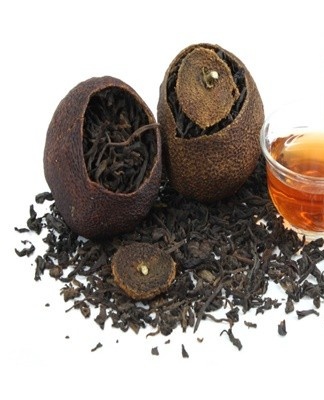
Match
Matcha - ground Japanese green tea. It is stored in the refrigerator in a small tightly closed package at a temperature slightly above freezing. Air access to raw materials should be limited.
Sally in bloom
The shelf life of tea can be up to three years. During this time, due to continued fermentation, it becomes more astringent. Ivan tea requires dryness, room temperature, reliability of the container, lack of sunlight.
Koporsky
The tea is made by fermenting and drying the leaves of fireweed. Storage of Koporye tea provides for ambient humidity not exceeding 70%, room temperature, linen or paper packaging.
Sheet
Tea leaves are stored in an opaque, tightly closed container, away from direct sunlight, heat sources, humidity and foreign odors. For loose leaf teas, room temperature and moderate humidity are appropriate.
masala
Masala is an Indian spiced tea. Once cooked, it is stored in small portions in a sealed tin container at room conditions. Storage time is 3-4 weeks.
Hibiscus
Red tea made from dried rosella flowers can be stored for up to five years after production. It should be stored in a dry place without access to light at a temperature of 18-20 ⁰С. The container must be tightly closed.
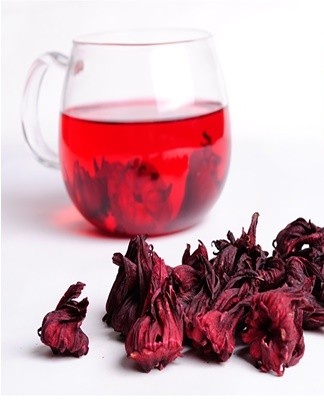
Chinese
Chinese tea is stored according to instructions. It should be remembered that the enemies of any type of tea are moisture, foreign odors, light, heat sources.
YELLOW
Egyptian yellow tea is very capricious in its content. Under ideal conditions, its shelf life is 6 months to a year.
It is placed in the refrigerator at a temperature slightly above zero degrees in an airtight container.
herbal
The dry collection of herbs is perfectly stored in paper or fabric bags, glass or ceramic jars with a tight-fitting lid. The storage area should be dark, dry, cool. It is worth airing it periodically to avoid mold or insects.
Where can brewed tea be stored?
Experts advise against using a metal teapot for drinking. Porcelain dishes are considered ideal for brewing tea.Such a teapot heats up better than earthenware, its texture is softer than glass.
Only freshly brewed tea is consumed. After 2 hours, all useful trace elements are oxidized, the taste becomes pungent and unpleasant.
Common Mistakes
When buying and using tea, several rules must be observed:
- do not buy a product stored in a store in a transparent container;
- do not store tea in wooden boxes covered with varnish or paint;
- don't tamp too hard.
Additional tips and tricks
When buying tea, you need to pay attention to the date of its collection, since it may take a long time before packing, it will lose its saturation. Use a clean spoon to apply the tea for steeping so you don't absorb odors from your hands.
It will be correct to use its own container for each variety, so as not to deteriorate the taste. To avoid erosion of tea aroma, do not store large portions of tea in the refrigerator.

